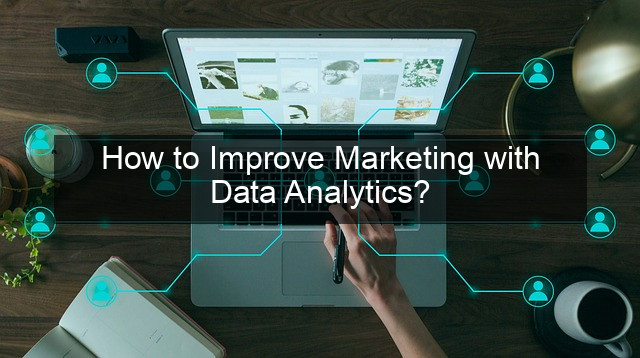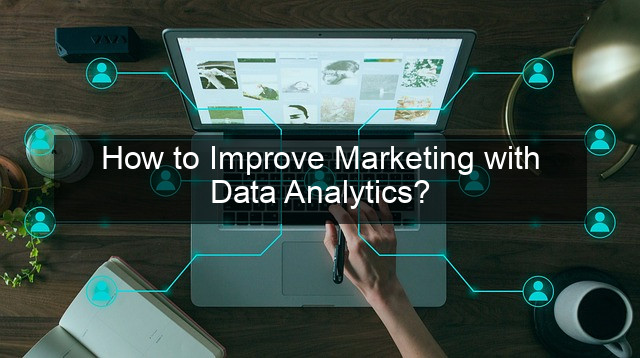How to Improve Marketing with Data Analytics?

- How to Improve Marketing with Data Analytics?
- How to Improve Marketing with Data Analytics
- Understanding Your Audience with Data
- Analyzing Customer Demographics
- Tracking Website Behavior
- Leveraging Social Media Insights
- Optimizing Campaigns with Data-Driven Insights
- A/B Testing for Better Results
- Personalizing the Customer Experience
- Measuring Campaign ROI
- Predictive Analytics for Future Marketing Strategies
- Forecasting Market Trends
- Identifying Potential Risks
- Implementing Data Analytics in Your Marketing Strategy
- Choosing the Right Tools
- Building a Data-Driven Culture
- Conclusion
- Frequently Asked Questions

How to Improve Marketing with Data Analytics
In today’s competitive landscape, marketing is no longer a game of gut feelings and creative hunches. It’s a data-driven discipline, where success hinges on the ability to collect, analyze, and interpret information. Data analytics has emerged as a critical tool for marketers, providing valuable insights into consumer behavior, campaign performance, and market trends. By leveraging the power of data, businesses can optimize their marketing strategies, personalize customer experiences, and achieve a higher return on investment. This article will delve into the ways in which data analytics can revolutionize your marketing efforts and provide actionable steps to integrate it effectively.
From understanding customer demographics to predicting future trends, data analytics empowers marketers to make informed decisions, rather than relying on guesswork. This shift towards data-driven marketing allows for greater precision in targeting, messaging, and campaign optimization. The ability to measure and track results in real-time provides invaluable feedback, enabling marketers to adapt their strategies quickly and efficiently. Ultimately, data analytics is not just about collecting numbers; it’s about transforming those numbers into actionable insights that drive business growth.
Understanding Your Audience with Data
Analyzing Customer Demographics
Data analytics provides a wealth of information about your target audience. By analyzing demographic data such as age, gender, location, and income, you can create detailed customer profiles. These profiles help you understand your customers’ needs, preferences, and motivations. This granular understanding allows you to tailor your marketing messages and offers to resonate with specific segments of your audience.
Furthermore, demographic analysis can reveal hidden patterns and correlations. For instance, you might discover that a certain age group is particularly responsive to a specific type of content or that customers in a particular region prefer a certain product feature. This level of insight enables you to refine your targeting and personalize your marketing efforts for maximum impact.
Understanding your audience through demographics is the first step towards creating effective marketing campaigns. By using data to segment your audience and tailor your messaging, you can improve engagement and conversion rates.
Tracking Website Behavior
Website analytics tools provide valuable data on how visitors interact with your website. Metrics such as bounce rate, time on page, and pages per visit can reveal which content resonates with your audience and which areas need improvement. By analyzing website behavior, you can identify potential pain points in the user experience and optimize your website for better conversion rates.
Tracking website behavior also helps you understand the customer journey. By analyzing the path users take through your website, you can identify key touchpoints and optimize the flow of information to guide users towards desired actions, such as making a purchase or filling out a contact form.
Analyzing website behavior allows you to refine your website design, content strategy, and user experience to better meet the needs of your target audience and achieve your marketing objectives.
Leveraging Social Media Insights
Social media platforms offer a wealth of data on user behavior, interests, and engagement. By analyzing social media insights, you can understand what your audience is talking about, what content they are sharing, and which influencers they follow. This information can inform your content strategy, influencer marketing campaigns, and social media advertising efforts.
Social media analytics also provides valuable feedback on the performance of your social media content. By tracking metrics such as likes, shares, and comments, you can measure the effectiveness of your posts and identify which types of content resonate with your audience. This data can help you refine your social media strategy and improve your engagement rates.
Leveraging social media insights enables you to connect with your audience on a deeper level, understand their preferences, and tailor your social media marketing for maximum impact.
Optimizing Campaigns with Data-Driven Insights
A/B Testing for Better Results
A/B testing is a powerful technique for optimizing marketing campaigns. By creating two versions of a marketing asset, such as an email subject line or a landing page, and testing them against each other, you can determine which version performs better. Data analytics provides the insights necessary to measure the results of A/B tests and make data-driven decisions.
A/B testing allows you to experiment with different variations of your marketing materials and identify the elements that drive the best results. This iterative process of testing and refinement can significantly improve the effectiveness of your campaigns and maximize your return on investment.
By consistently implementing A/B testing and analyzing the results, you can continuously optimize your marketing campaigns for better performance.
Personalizing the Customer Experience
Data analytics enables you to personalize the customer experience by tailoring your marketing messages and offers to individual customer preferences. By analyzing customer data, you can identify patterns and predict future behavior. This allows you to deliver targeted messages that are relevant and engaging.
Personalized marketing can significantly improve customer satisfaction and loyalty. By showing your customers that you understand their needs and preferences, you can build stronger relationships and increase customer lifetime value.
Data-driven personalization is key to creating a truly customer-centric marketing strategy.
Measuring Campaign ROI
Data analytics provides the tools to accurately measure the return on investment (ROI) of your marketing campaigns. By tracking key metrics such as conversion rates, customer acquisition cost, and lifetime value, you can determine the effectiveness of your marketing efforts and identify areas for improvement.
Measuring campaign ROI allows you to demonstrate the value of your marketing activities to stakeholders and justify continued investment in data-driven marketing initiatives.
Accurate ROI measurement is essential for optimizing your marketing budget and maximizing the impact of your campaigns.
Predictive Analytics for Future Marketing Strategies
Forecasting Market Trends
Predictive analytics uses historical data to identify patterns and predict future trends. By analyzing market data, you can anticipate changes in consumer demand, identify emerging opportunities, and adapt your marketing strategies accordingly.
Forecasting market trends allows you to stay ahead of the curve and position your business for success in a rapidly changing market environment.
Predictive analytics empowers you to make proactive decisions and optimize your marketing strategies for future growth.
Identifying Potential Risks
Data analytics can also be used to identify potential risks and challenges. By analyzing market data and customer behavior, you can anticipate potential problems and develop strategies to mitigate them.
Identifying potential risks allows you to proactively address challenges and protect your business from negative impacts.
Risk management is a critical aspect of data-driven marketing and can help you avoid costly mistakes.
Implementing Data Analytics in Your Marketing Strategy
Choosing the Right Tools
Selecting the appropriate analytics tools is paramount for success. Different tools offer varying functionalities, catering to specific needs. Consider factors such as your budget, technical expertise, and the specific data you need to analyze when making your choice.
Researching available options and understanding their capabilities will ensure you select a tool that aligns with your marketing objectives and provides the necessary insights.
The right tools will empower you to collect, analyze, and interpret data effectively, driving informed decision-making.
Building a Data-Driven Culture
Creating a data-driven culture within your organization is essential for maximizing the impact of data analytics. This involves fostering a mindset where data is valued and used to inform decisions at all levels.
Encourage collaboration between marketing and data analytics teams to ensure that insights are effectively translated into actionable strategies.

A data-driven culture empowers everyone within the organization to leverage data for improved performance.
| Data Type | Benefit |
|---|---|
| Website Analytics | Improved User Experience |
| Social Media Analytics | Enhanced Engagement |
| CRM Data | Personalized Marketing |
- Collect relevant data.
- Analyze the data to identify trends.
- Use insights to improve marketing campaigns.
Conclusion
Data analytics has become an indispensable tool for modern marketers. By leveraging the power of data, businesses can gain a deeper understanding of their customers, optimize their marketing campaigns, and achieve a higher return on investment. Implementing a data-driven approach to marketing is no longer a luxury but a necessity for staying competitive in today’s dynamic market.
Embracing data analytics empowers marketers to make informed decisions, personalize customer experiences, and drive business growth. By integrating data analysis into every aspect of your marketing strategy, you can unlock valuable insights and achieve sustainable success in the long run.
Frequently Asked Questions
How can I get started with data analytics for marketing?
Begin by identifying your key marketing objectives and the data you need to track to measure progress. Choose analytics tools that align with your needs and budget. Start with basic metrics and gradually incorporate more advanced analytics techniques as you gain experience.
What




